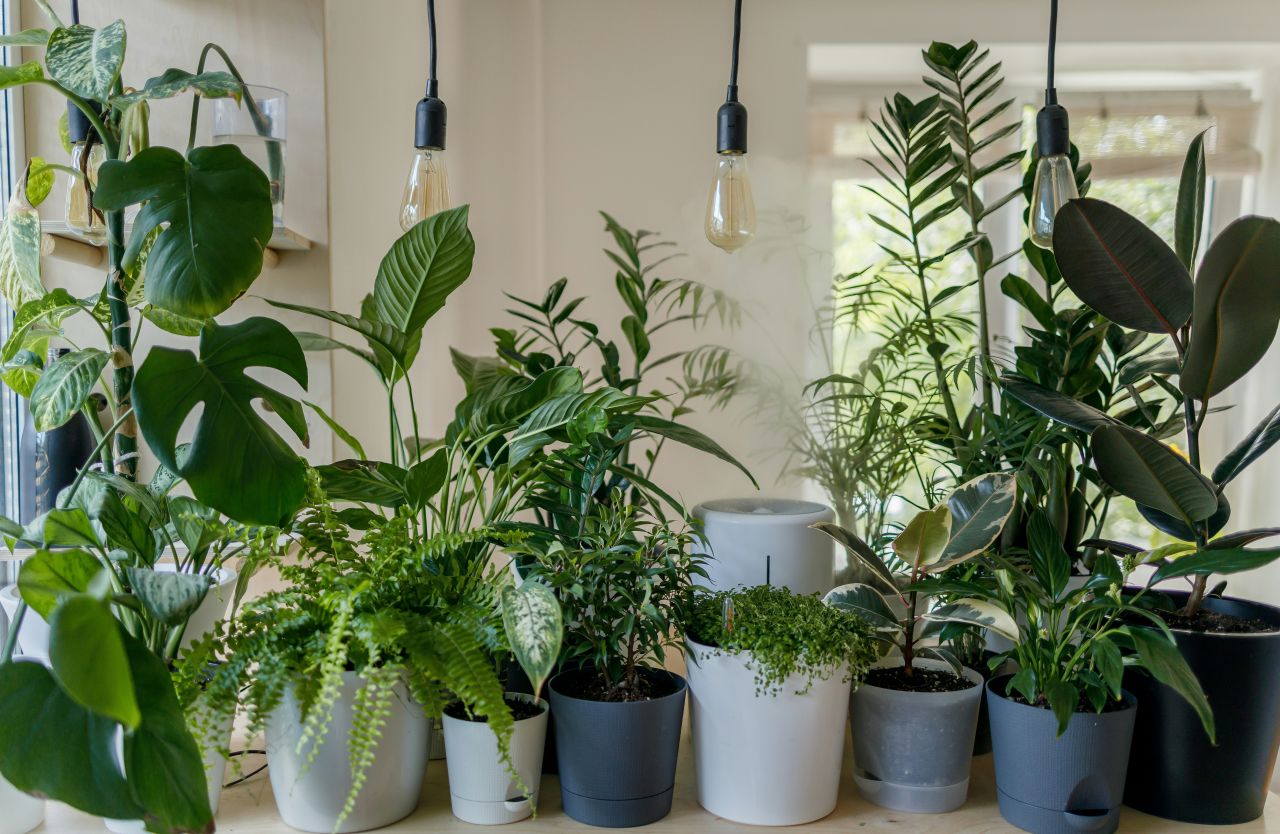How Indoor Gardens Enhance Living Spaces
Introduction
In recent years, the trend of indoor gardening has blossomed, with more and more people embracing the beauty and benefits of bringing greenery into their homes. In this article, we explore how indoor gardens enhance living spaces, examining the aesthetic, functional, and psychological advantages they offer.
Aesthetic Enhancements
Greenery as Decor: Adding Life and Color Indoor gardens serve as natural décor elements, infusing living spaces with vitality and vibrancy. Whether through potted plants, hanging baskets, or cascading vines, the lush foliage adds depth and texture to interiors, creating a welcoming and inviting atmosphere.
Creating Focal Points: Plants as Art Plants have the power to command attention and serve as focal points within a room. By strategically placing larger specimens or unique varieties, indoor gardens can function as living works of art, drawing the eye and sparking conversation.
Incorporating Different Styles: From Minimalist to Lush Jungles Indoor gardens come in a myriad of styles, from sleek and minimalist to lush and jungle-like. By selecting plants and containers that complement existing décor and personal taste, individuals can create indoor oases that reflect their unique aesthetic preferences.
Functional Benefits
Improving Air Quality: Natural Purifiers Plants are nature’s air purifiers, filtering out harmful toxins and pollutants from the air and improving indoor air quality. Through a process called phytoremediation, plants absorb pollutants such as formaldehyde, benzene, and carbon monoxide, releasing oxygen in return.
Noise Reduction: Plant Sound Absorption In addition to improving air quality, indoor gardens can also help reduce noise levels within living spaces. Plants have been shown to absorb and diffract sound waves, making them an effective natural barrier against unwanted noise pollution.
Temperature Regulation: Cooling and Insulation Plants can also help regulate indoor temperatures by providing natural cooling and insulation. Through a process called transpiration, plants release moisture into the air, cooling the surrounding environment during hot weather. Additionally, the layer of air trapped around plant leaves acts as insulation, helping to maintain consistent temperatures indoors.
Psychological Well-being
Stress Reduction: Biophilic Effects The presence of indoor gardens has been linked to reduced stress levels and increased feelings of calm and relaxation. This phenomenon, known as biophilia, describes the innate human tendency to seek connection with nature. By bringing elements of the natural world indoors, indoor gardens create environments that promote well-being and tranquility.
Boosting Creativity: Inspiring Environments Indoor gardens can also stimulate creativity and productivity by providing visually inspiring environments. Studies have shown that exposure to natural elements, such as plants and sunlight, can enhance cognitive function and problem-solving skills, leading to increased creativity and innovation.
Providing a Sense of Accomplishment: Nurturing Growth Caring for indoor gardens can instill a sense of accomplishment and pride in individuals as they watch their plants thrive and grow. The act of nurturing living organisms fosters a sense of responsibility and connection, contributing to overall feelings of fulfillment and well-being.
Practical Considerations
Selecting Suitable Plants: Low Maintenance Varieties When choosing plants for indoor gardens, it’s essential to consider factors such as light levels, humidity, and maintenance requirements. Opt for low-maintenance varieties that thrive in indoor environments, such as pothos, snake plants, and spider plants, to ensure long-term success.
Optimizing Light Conditions: Placement and Lighting Options Proper lighting is crucial for the health and growth of indoor plants. Place your indoor garden in locations with adequate natural light, such as near windows or glass doors. If natural light is limited, supplement with artificial lighting options such as grow lights to ensure optimal growth conditions.
Maintenance Tips: Watering, Pruning, and Pest Control Regular maintenance is key to keeping indoor gardens healthy and thriving. Water plants as needed, taking care not to overwater or underwater. Prune dead or yellowing leaves to promote new growth and prevent disease. Additionally, monitor plants for pests and treat infestations promptly to prevent spread.
Integrating Indoor Gardens in Different Living Spaces
Living Rooms: Bringing Nature into Social Spaces In living rooms, indoor gardens can serve as focal points, bringing a touch of nature into social gathering spaces. Place potted plants on coffee tables, shelves, or mantels to create inviting and cozy environments for entertaining guests or relaxing with loved ones.
Bedrooms: Creating Tranquil Retreats In bedrooms, indoor gardens can create tranquil retreats conducive to relaxation and restful sleep. Incorporate plants with calming scents and air-purifying properties, such as lavender or jasmine, to promote a sense of serenity and well-being.
Offices: Enhancing Productivity and Well-being In home offices or workspaces, indoor gardens can enhance productivity and well-being by creating inspiring and energizing environments. Place plants on desks, bookshelves, or windowsills to boost mood and creativity while reducing stress and fatigue.
Creative Indoor Garden Ideas
Vertical Gardens: Maximizing Space Vertical gardens are an excellent option for maximizing space in small living areas. Install wall-mounted planters or hanging baskets to create vertical greenery walls that add visual interest and texture to interiors while conserving valuable floor space.
Terrariums: Miniature Ecosystems Terrariums are self-contained miniature ecosystems that are easy to care for and can thrive in almost any environment. Create your own terrarium using glass containers, soil, gravel, and a selection of small plants to add a touch of greenery to desks, shelves, or countertops.
Herb Gardens: Combining Form and Function Herb gardens are both practical and decorative, providing fresh herbs for cooking while adding beauty and fragrance to living spaces. Plant herbs such as basil, mint, and rosemary in decorative pots or containers and place them in kitchens or sunny windowsills for easy access and visual appeal.
Conclusion
Indoor gardens have the power to transform living spaces, enhancing both aesthetics and functionality while promoting psychological well-being. By incorporating greenery into our homes, we create environments that are not only beautiful and inviting but also conducive to health, happiness, and creativity. So, whether you’re a seasoned gardener or a novice plant parent, consider adding an indoor garden to your living space and experience the transformative power of nature firsthand.
